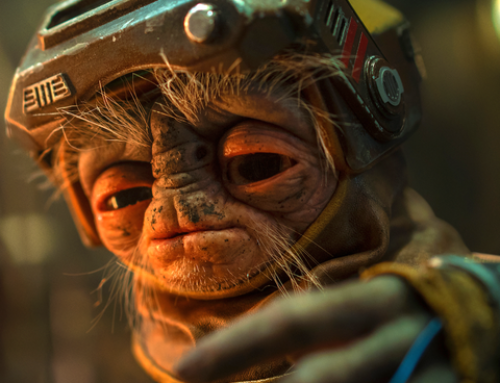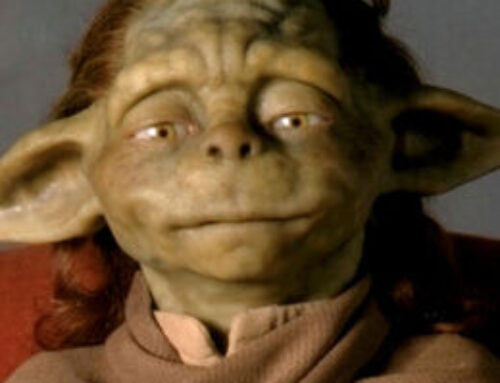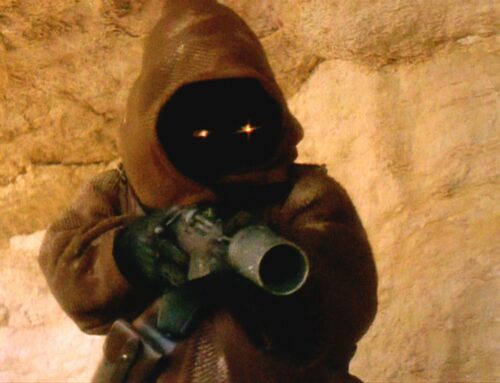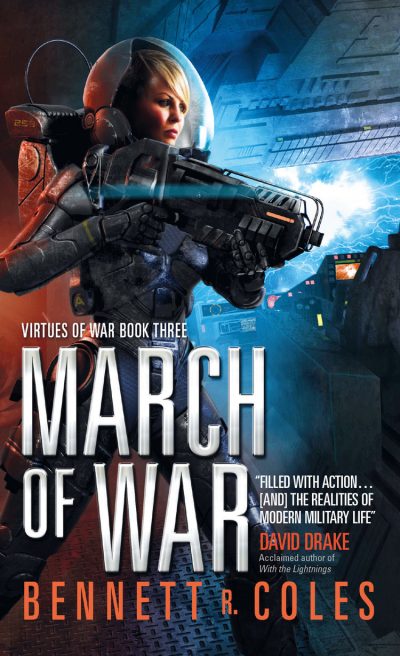11 Star Wars Animals That Deserve More Screen Time
Star Wars creatures have always been a huge part of the story, filling out that galaxy far, far away with a fantastic menagerie of beasts, allies and threats. Movies by their nature are fast and there isn’t always time to get to know some of our favorite creatures. But as Star Wars continues to grow on Disney+ some of these amazing animals are likely to make return appearances, and hopefully they’ll get the same sort of treatment that the rancor received in The Bad Batch and The Book of Boba Fett.
Let’s take a look, in order of size, at some Star Wars creatures who we’d love to see again.
Sentient versus non-sentient
But first, some definitions. Today we’re looking at what we’d generally think of as animals – species that don’t have a language or culture and who mostly have limited intelligence. I admit that it can sometimes be hard to tell if a Star Wars creature is a “higher life form” or not, and sometimes Star Wars itself isn’t always sure.
But to be clear, this article isn’t about the various races in the Star Wars universe that we’re hoping to learn more about. Jawas, for example, date right back to early in Star Wars: A New Hope but are still mostly a mystery.
Yoda’s species is a complete unknown beyond the three members we’ve met: Yoda himself, Jedi Master Yaddle and little Grogu (whose nickname Baby Yoda might yet be proven to be accurate, if certain theories about what happens in the Jedi Temple stays in the Jedi Temple prove to be correct…).
Babu Frik from Star Wars: The Rise of Skywalker is a charmer who we’d love to learn more about, but while his language ability often seems limited to little more than “hey, heyyyy!” his intelligence is clear. The Lanai caretakers or “fish nuns” from the planet Ahch-To are also a puzzle, and there’s much to wonder about their relation to Luke Skywalker and their purpose in The Last Jedi, but no-one thinks of them as animals.
And finally, Anakin Skywalker might declare about the Tusken Raiders, “They’re animals! So I slaughtered them like animals,” but The Mandalorian and particularly The Book of Boba Fett have shown the Sand People to be intelligent people with a clearly defined culture and unique language.
So there are lots of questions still out there about lots of folks in the Star Wars universe, but today let’s take a look at some of the animals we’d most like to see more of.
11 of the coolest and most underappreciated Star Wars creatures
Starting from smallest and going to largest, here are some Star Wars critters, mounts, beasts and full-on monsters that deserve more time on screen than they’ve had to date.
Porg
These adorable, winged creatures are just one of the many controversies from Star Wars: The Last Jedi – some fans absolutely love them and others decry them as nothing more than a cheap addition to sell new toys. There’s no question that merch is a delicate art, but in this case the truth of porg creation comes from a reality of film-making: when filming on the real island of Skellig Michael, the crew struggled to frame shots with all the puffins flying around in the background. Rather than edit the birds out, the team decided to work them into the movie – and thus were born the porgs!
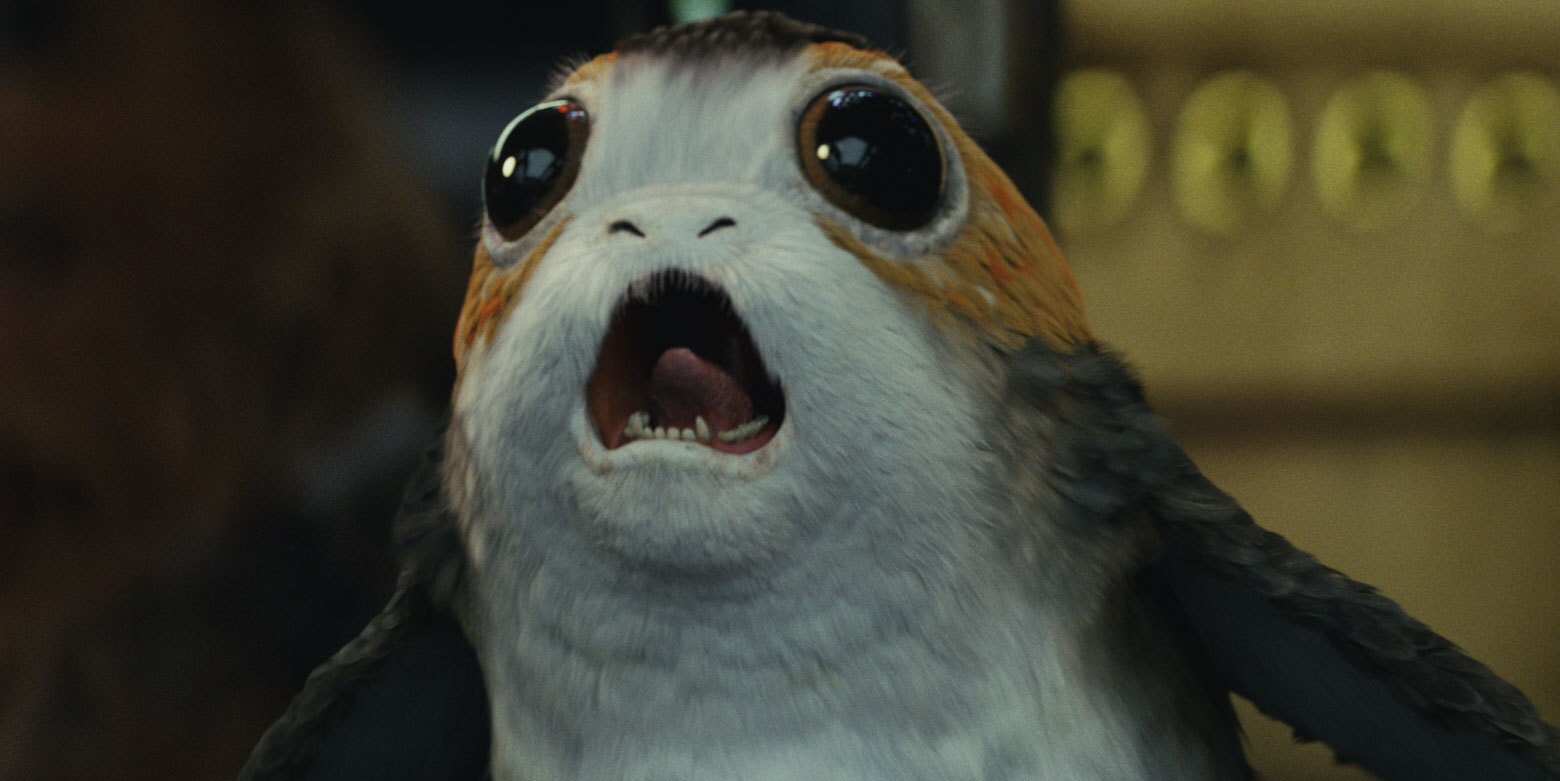
Source
There’s no denying that these cute, wide-eyed creatures provide some genuine humor and levity to certain scenes and Star Wars has a long history of filling in the details of the galaxy with fun aliens. But considering how much time on screen the porgs got, and the fact that they came with Chewbacca on the Falcon to the Battle of Crait, it would have been even better if the porgs had played some kind of meaningful role.
Think how much fun it could have been to see our heroes sneaking porgs aboard Snoke’s ship to chew out the power cables and disrupt the hyperspace tracker, or watching Rey release a flock of porgs into the air on Crait to disrupt a TIE fighter attack. Yes, both scenarios would have seen porg deaths, but they would have died heroically.
And if we have to choose between the porgs and the fish nuns to bring back, I say porgs!
Loth Cat
A great example of where something cute evolved into something significant can be seen in the loth cat, introduced early in Star Wars: Rebels. These furry mammals are native to the planet Lothal and at first were nothing more than minor additions to the scenery – texture to help fill out the society where Ezra Bridger grew up. But as the series grew and deepened, the presence of loth cats did as well. Young Ezra learned an early lesson about the Force when he tried to connect with a loth cat; these critters served as distractions to draw stormtroopers away from the TIE defender Sabine Wren was hoping to board; and after Kanan’s death and the mysterious arrival of the loth wolves, the sudden appearance of a loth cat often heralded something big about to happen.

Source
It seems that the loth cat can be found on many planets, but their spiritual connection to Lothal became an ongoing plot point for Rebels. As the new Star Wars: Ahsoka series promises to pick up some of those threads, perhaps the loth cat will return.
Kowakian Monkey Lizard
Of all the animals we’re examining today, the kowakian monkey lizard is the most controversial. For starters, the argument could be made that these little creatures are sentient and therefore outside our definition of “animal”. And then there’s the question of whether or not we like these filthy wretches.
Kowakian monkey lizards were first introduced in Star Wars: Return of the Jedi with the infamous Salacious B. Crumb cackling away in Jabba the Hutt’s throne room. The fact that this character had a name and multiple moments on screen gave audiences the impression that Crumb was a sentient being, and if we’re being honest I think it’s fair to say that in the original vision of George Lucas, kowakian monkey lizards were people too.
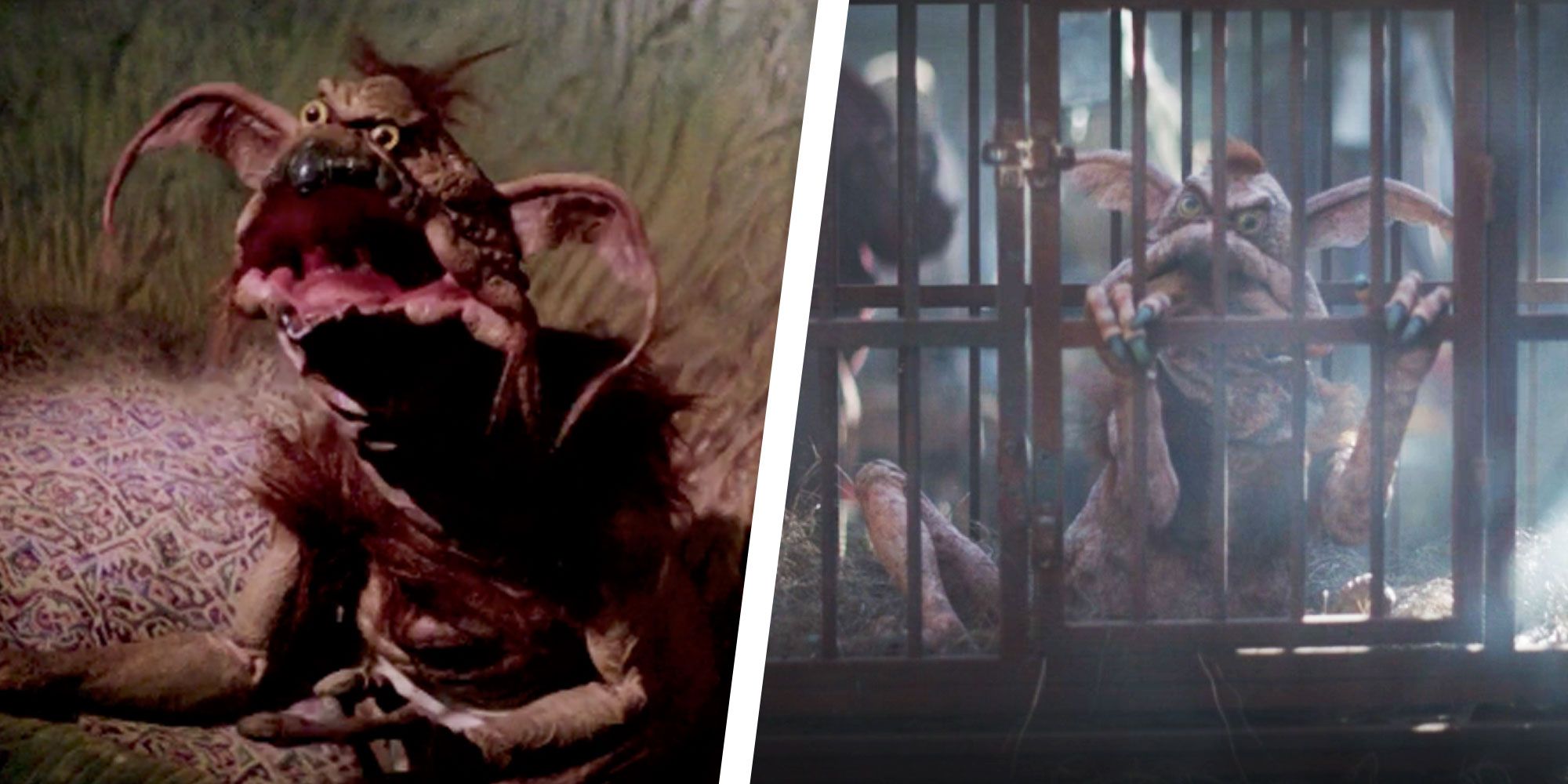
But The Mandalorian changed all that, with a pointed scene in Episode 1 where we clearly saw a kowakian monkey lizard being roasted on a food vendor’s spit, another poor beast drooping its large ears as it watched from a cage. This scene strongly suggests that this species is a higher functioning but non-sentient species considered as pets or food by galactic society. Looking back at Return of the Jedi through this lens, Jabba’s monkey lizard may have simply been a favorite pet with a funny name. Crumb never actually spoke, and in many ways acted on animal instinct. So are we re-imagining George’s vision? Well, maybe, but it would be consistent with a lot of other things from Return of the Jedi sitting awkwardly with modern canon, like Luke Skywalker Force-choking his enemies, Bib Fortuna and Oola apparently being the same species (Twi’lek) and, oh yeah, the Emperor dying…
However we view them, kowakian monkey lizards are a lot of fun and certainly have the potential to cause trouble in future Star Wars outings. I hope we see more of them.
Rathtar
Rathtars might be sentient or might not, but either way they’re fabulous space fantasy monsters. In one of the most enjoyable sequences in Star Wars: The Force Awakens, several of these rolling flesh balls get loose and wreak havoc against Han Solo, his friends and enemies. With devastating speed, razor-sharp teeth and too many tentacles to count, the rathtars tear through Han’s ship with furious abandon.
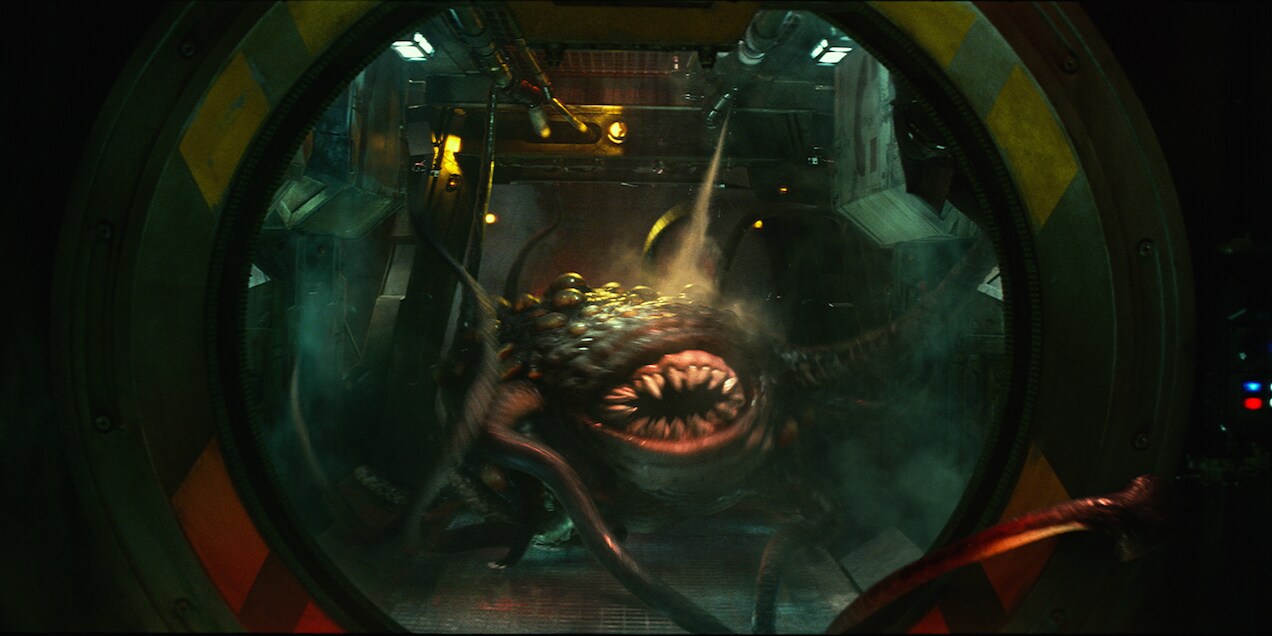
Source
But where do they come from? What’s their homeworld like? Why do people hire folks like Han to capture and haul rathtars, anyway? There are so many questions, and I think Star Wars could have a lot of fun answering any or all of them. We want more rathtars!
Varactyl
A bit bigger than a rathtar, but definitely not as scary, is the varactyl, the giant, domesticated lizard Obi Wan Kenobi rode into battle against General Grievous in Star Wars: Revenge of the Sith. With its scaly, green skin and bright green feathers, the varactyl is one of the more beautiful creatures in the Star Wars universe.
But how do they fit into their home world’s society? Obi Wan Kenobi was able to jump right onto a saddled varactyl and it responded to his commands willingly, so obviously the varactyl is a common mount on Utapau. But are they primarily beasts of burden, or are they bred for battle? What history do varactyls have with their patron species? Are they completely domesticated or do they still survive in the wilds of Utapau’s surface?
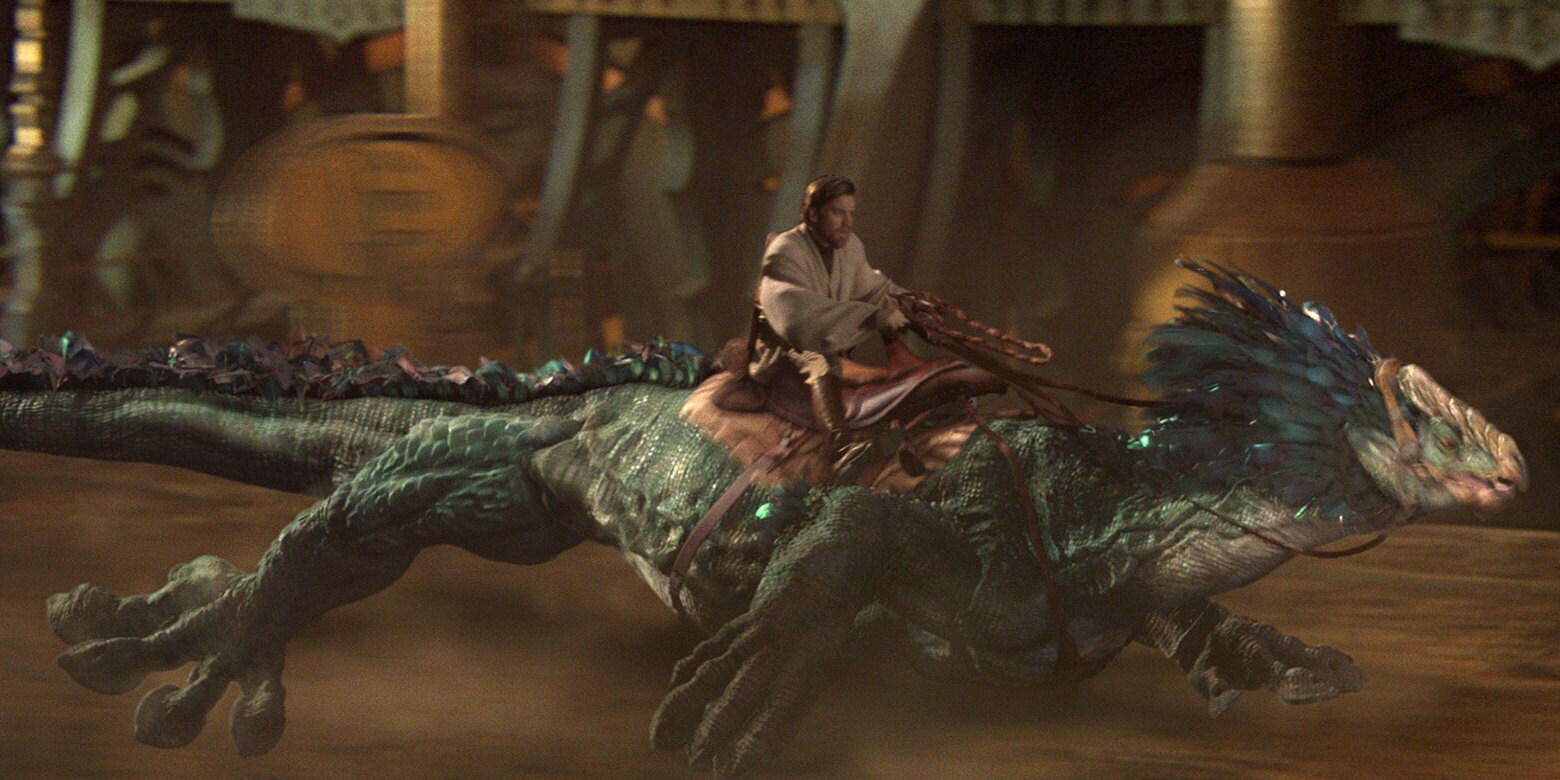
Source
The varactyl’s role in Revenge of the Sith was fun in its own right, but I think there’s a lot more that could be explored – like, why have saddled beasts when speeders are readily available? Is there something unique about Utapau that requires this low-tech form of transport? Denying our heroes their standard tech is always a rich source of adventure and feeds well into the space fantasy feel of Star Wars. And let’s be honest: who wouldn’t want to see Mando and Baby Yoda saddling up in a varactyl?
Fathier
One of the least controversial elements of The Last Jedi, the fathier is a large mammal that is sort of a cross between a dog, a horse and an elephant. With big brown eyes and floppy ears they look like curious puppies – if puppies were as tall as a T-Rex and could run like the wind. Popular mounts for the races on Canto Bight we see them only in harsh captivity and it’s never made clear if these creatures are native to that world. Rose Tico knows what they are, suggesting that they may be from off-world. Once Finn and Rose free the herd we get the sense that the beasts will survive in the wilderness, but it could be that all this species needs is long grass and open spaces to run.
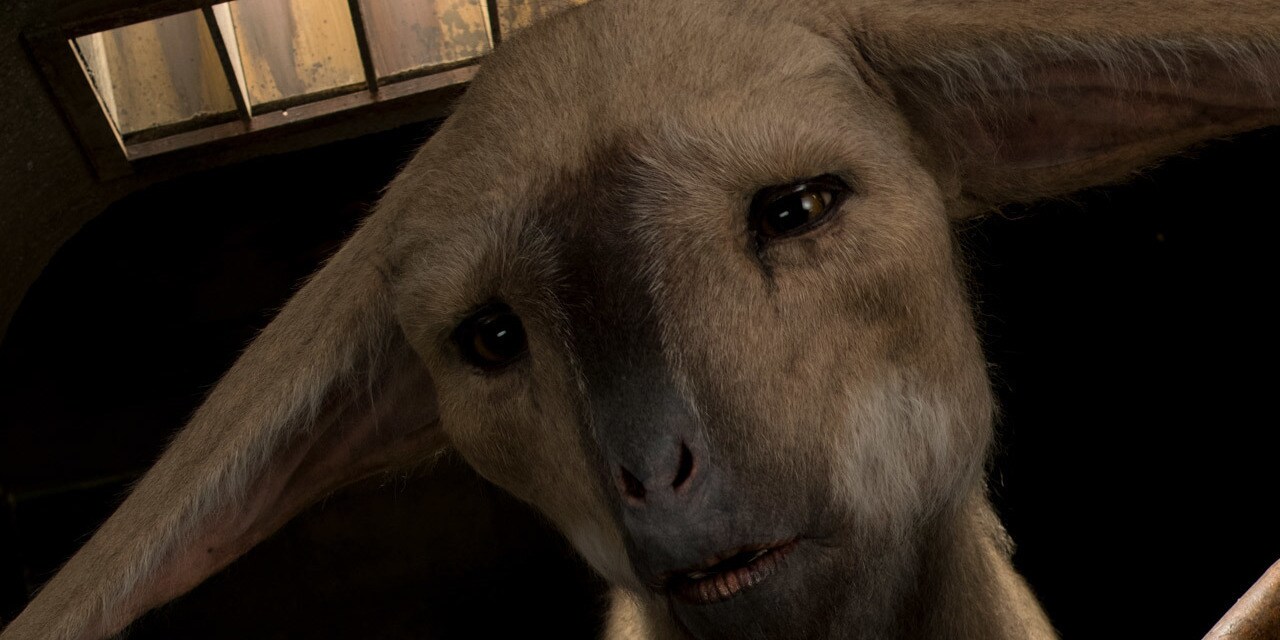
Source
Many fans (myself included) have criticized the whole Canto Bight subplot in The Last Jedi, but that doesn’t mean everything about it was bad. DJ is a fascinating character who raises questions about ethics and morality, Rose is a cool hero who wasn’t given enough of a chance to shine, and those fathiers have a lot of potential for adventure. Maybe after Rise of Skywalker, Rose retires to a peaceful life as a wildlife custodian on a distant planet where fathiers and other creatures roam free, but then she has to call on her technical brilliance, fighting skills and connection to the fathiers to stop evil poachers, and she discovers that DJ is involved.
Krykna
Of all the Star Wars creatures created over the years, the krykna is the one I hate the most. Hands down. I mean, what’s worse than creepy, big-headed, knobbly legged, giant freakin’ spiders that, if not actually sentient, have an eerie connection to the Force. I mean… blahhhhh!!!
Fun fact: the krykna was first designed for The Empire Strikes Back as one of many creatures Luke might have to face down on Dagobah. It didn’t make the cut, likely due to the technical challenges of bringing such a complex moving form to life with 1970’s SFX, but the design clearly made an impression on the Star Wars creation team.
A slightly modified version of the original krykna finally made it into canon in Rebels: the mysterious local species that threatened Hera Syndulla and friends as they first established Chopper Base. In fine dramatic form, the role of the kryknas deepened with the storyline. At first they were simply the adversary, a hostile group of creatures threatening the rebel base. But as Kanan explored the nature of the Force with Bendu, the krykna evolved into something more than simple monsters – through them Kanan connected with the living Force and grew as a Jedi. The kyrkna never stopped being a potential threat (and totally gross!) but as our heroes grew, so too did their relationship with the spidery creatures.
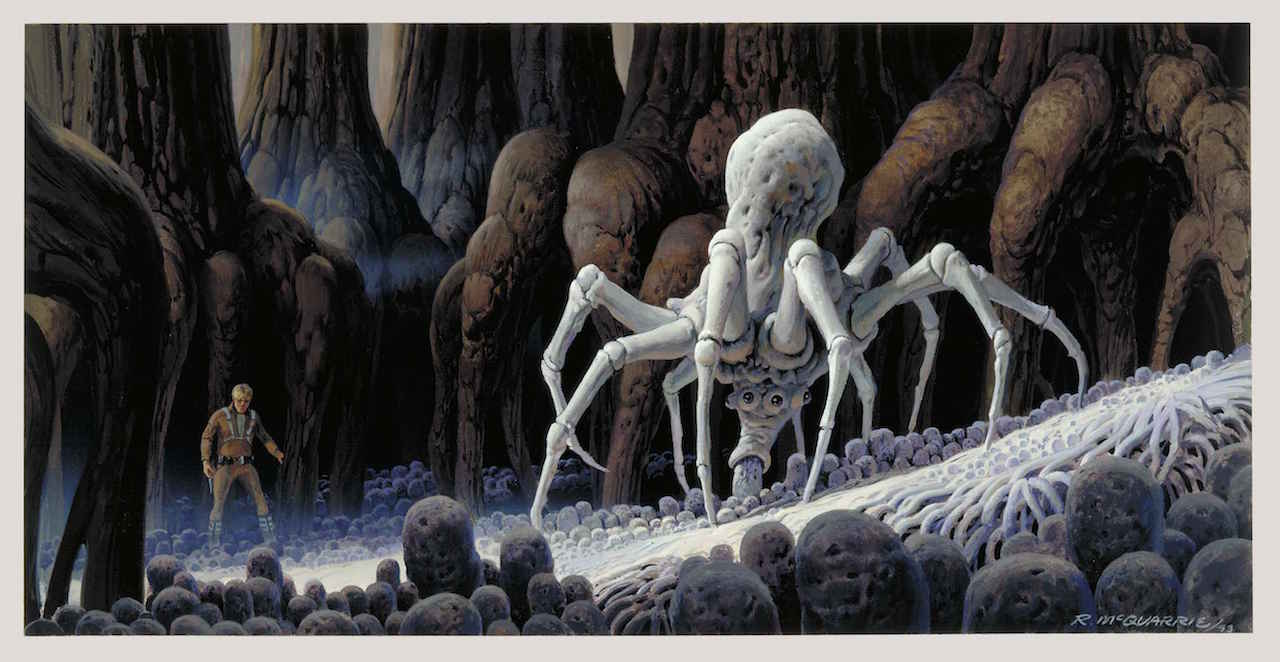
Source
It seems the original Empire Strikes Back concept art was just too cool to relegate solely to an animated Star Wars show, because the krykna appeared in The Mandalorian on another world and in a different role. As Din Djarin, Baby Yoda and their passenger hide from New Republic patrol ships, they discover a pool of hot water that offers welcome relief from the frigid temperatures around them. But soon enough they’re surrounded by tiny spider hatchlings, which Grogu considers a tasty snack before their monstrous parent arrives. A terrifyingly huge krykna and her brood give chase to our heroes, nearly destroying the Razor Crest before finally being killed.
It’s interesting to see the same creature on very different worlds, and based on the variations in size and behavior the two appearances of the krykna suggest at least different sub-species. In both cases, though, the kryknas dominated every scene they were in and raised the tension sky-high for both characters and audience. As much as I’ll hate every minute of it (anything more than six legs is just too many), I hope that the krykna find its way into future Star Wars productions.
Opee Sea Killer
Star Wars doesn’t often venture underwater, but when it does we’re treated to a whole new set of dangerous and fascinating creatures. In Star Wars: The Phantom Menace, Obi Wan Kenobi and Qui Gon Jinn, “guided” by the hapless Jar-Jar Binks, venture through the planet core of Naboo. This deep sea world is full of predators including the opee sea killer, which lashes out with its tongue to haul in the Jedi’s submersible and then chomp down on it with powerful, sharp teeth.
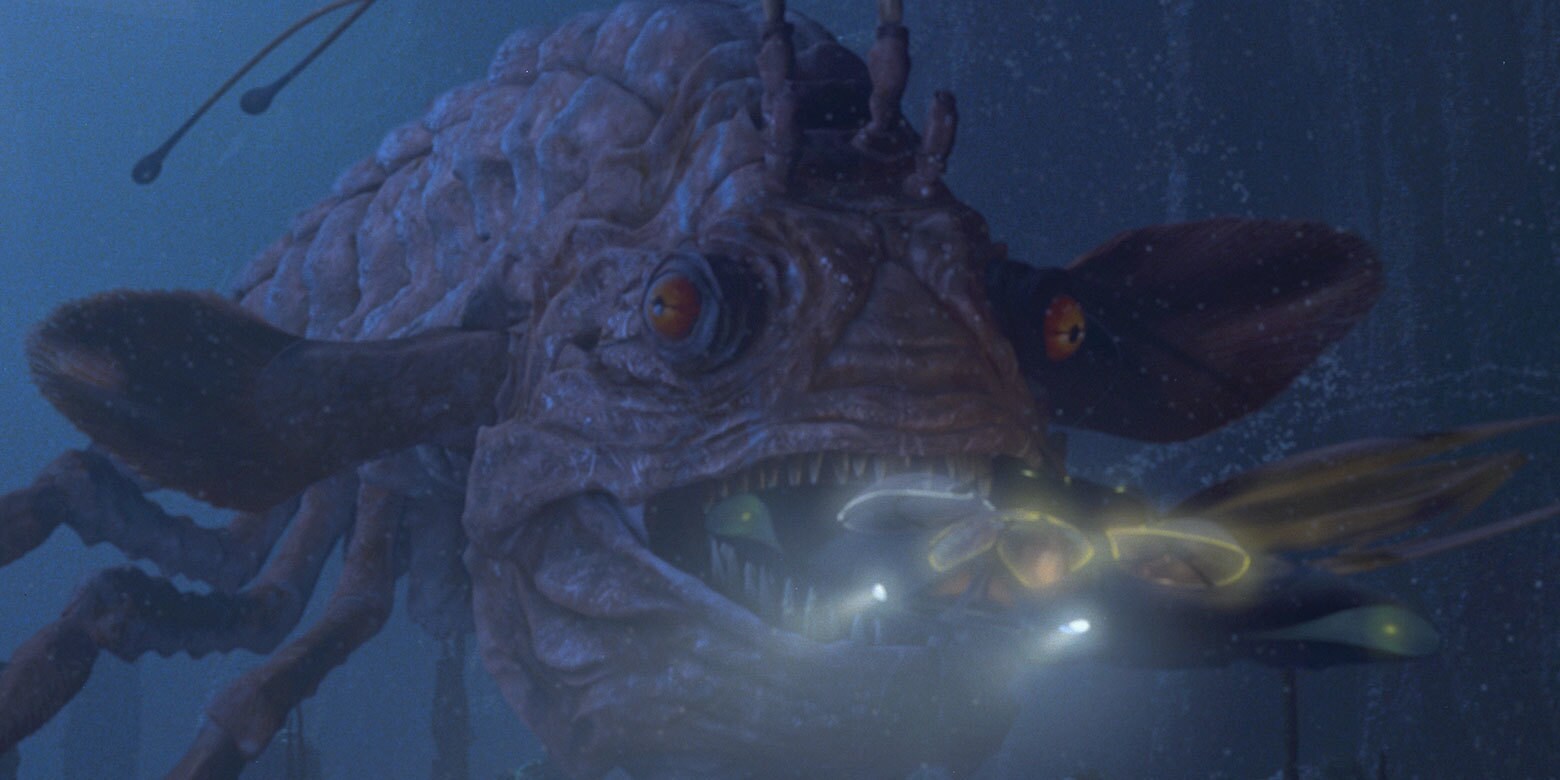
Source
Ideally suited to its environment, the sea killer undoubtedly got its terrifying name from the gungans who share its watery environment. Credit is due to Star Wars: The Clone Wars for helping to bring gungan culture to life, but almost all of what we saw of the gungans in Clone Wars was terrestrial. As a fully amphibious species, I’d love to see some purely underwater adventures featuring genuinely badass gungan warriors. No doubt the sea killer would be a major threat, and it would be fascinating to learn more about this creature and how to combat it (without waiting to be rescued by the arrival of a bigger fish).
Purgill
The purgill are perhaps the best example of Star Wars creatures being introduced from the start as more than just monsters or local color. Denizens of deep space, these whale-like beasts are seen as a nuisance by an uncharacteristically bitter Hera Syndulla, but over the course of a single episode we learn a great deal about them. Ezra Bridger discovers that they’re Force-sensitive, and the surprise of the story is the revelation that these creatures are capable of organic hyperspace travel.
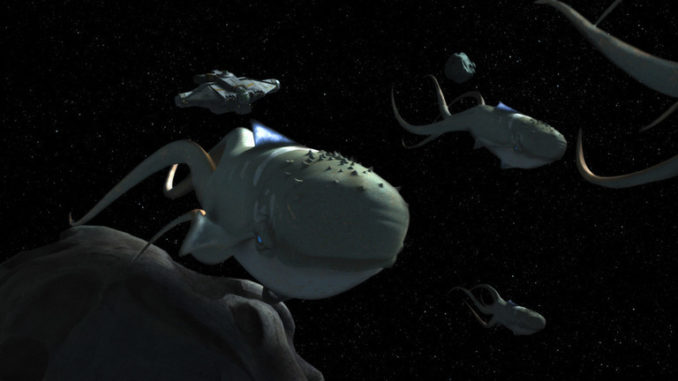
Source
The purgill return for the finale of Rebels and play a central role (no spoilers) in the epic conclusion of the series. The Ahsoka TV show has hinted that it will pick up on the purgill-driven storyline, and fans can’t wait to see what further role these gentle giants will play.
Sando Aqua Monster
Introduced in Phantom Menace, the sando aqua monster is an enormous underwater creature that snatches the opee sea killer and inadvertently frees our heroes. Truly gargantuan, the sando aqua monster is interesting for its clearly terrestrial body form, such as arms ending in hands, instead of flippers. The monster appears again in one of the animated shorts in Forces of Destiny, where the huge creature comes ashore to rescue its child being held by poachers. A brave and insightful Padme Amidala, always eager to avoid conflict when she can, figures out the reason for the sando’s attack and frees the baby.

Source
But we’re still left with the question of what role does the sando aqua monster play in the biosphere of Naboo. Capable of living both above and below the water, its huge size likely makes it the top predator on the planet. Do aqua monsters threaten both gungan and Nubian cities? Are they prized by galactic game hunters? Do Imperial scientists try to capture them and breed them as weapons? There’s a lot to explore.
Krayt Dragon
The krayt dragon has an interesting history in Star Wars lore, having been first introduced in books and video games. One of the most famous Expanded Universe characters is Darth Krayt, a Jedi raised by Tusken Raiders who turned to the Dark Side and took as his Sith name the most feared creature on his planet. The story is well-known to fans of the pre-Disney novels and comics, but the krayt dragon was never even mentioned in film until Season 2 of The Mandalorian.
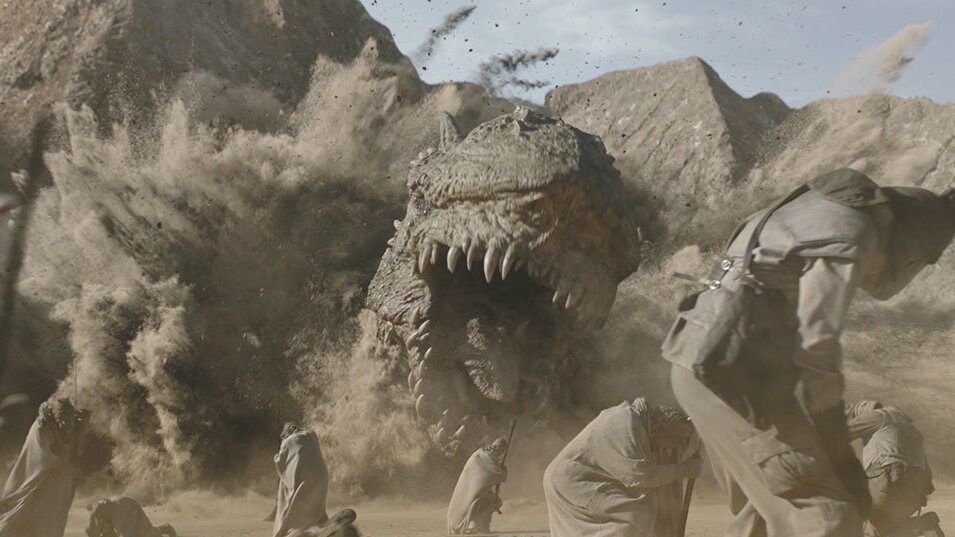
Source
In one of the most epic episodes in the series so far, Mando joins forces with the local Tusken Raiders to hunt a canyon krayt dragon. Considered by Tuskens and moisture farmers alike as mindless, vicious creatures, the dragon is feared by all. And considering how long those fans in the know have waited to see the krayt dragon on screen, the monster does not disappoint. Emerging from a tidal wave of sand to swallow a bantha in a single bite of its powerful jaws, the enormous krayt proves a match for the combined forces of sentients opposing it, brought down only by Mando’s heroics and enough explosive power to leave Sabine Wren speechless in delight.
Some folks have suggested that the long skeleton C-3PO trudges past early in A New Hope is a smaller krayt dragon. This idea is still open to debate, but it hints at the huge influence these creatures have over Tatooine life. Since Star Wars seems in no hurry to leave that desert world, let’s hope there are more adventures coming that feature the dragon.
Zillo Beast
Of all the Star Wars creatures with the potential to grow, none can compare to the Zillo beast. Seen in two fabulous episodes of The Clone Wars, this monster was awakened by a powerful bomb on the dug home planet of Malastare. Impervious to lightsabers and laser blasts, the Zillo was captured only when Republic Forces subdued it with specialized energy beams. In the single worst plan ever in Star Wars, the Zillo beast was brought back to Coruscant for study. In a classic monster movie twist, the Zillo escaped and went on a rampage, leaving a swathe of destruction in its wake before finally being stopped at the Galactic Senate.
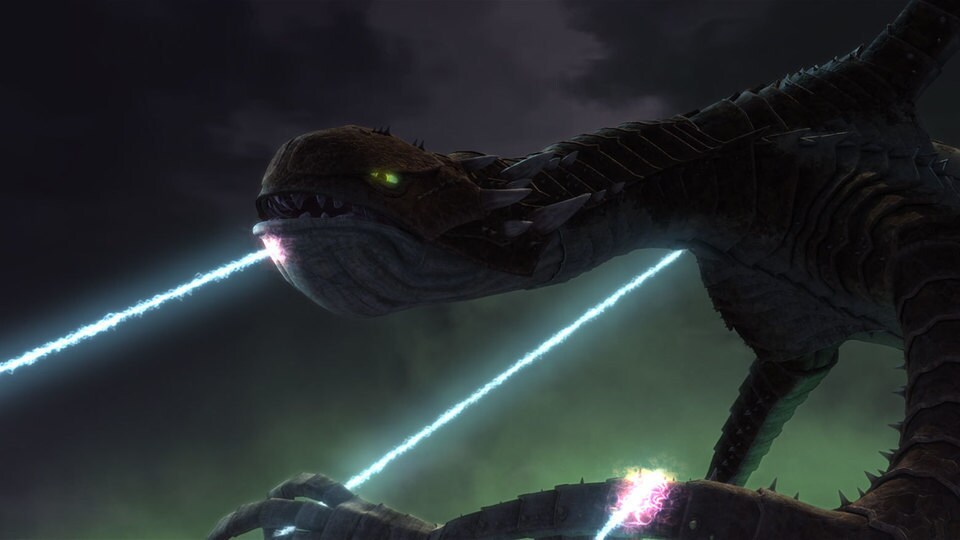
Source
Although not officially part of canon, rumors abound that Chancellor Palpatine cloned the Zillo beast. We’ve never seen the results of these experiments in film, but what a different ending The Rise of Skywalker might have had if Palpatine had unleashed a Zillo beast against Resistance forces! As it is, we have the Episode IX we have, but further adventures involving the Zillo beast – whether animated or live action, in a Star Wars future or back in the High Republic – rate high on my wish list.
Exogorth
Finally, no discussion of Star Wars creatures deserving of more screen time would be complete without the exogorth. Famous for its few seconds in The Empire Strikes Back, this giant space slug lived inside a giant space rock at the center of an asteroid field. Han Solo, in a desperate attempt to evade pursuing Imperial forces, flew the Millennium Falcon into what he thought was a deep cave. But he and his crew quickly learned to their horror that their hiding place was even more dangerous than Darth Vader and his fleet, and Han barely slipped his ship through the massive teeth of the exogorth’s open mouth.
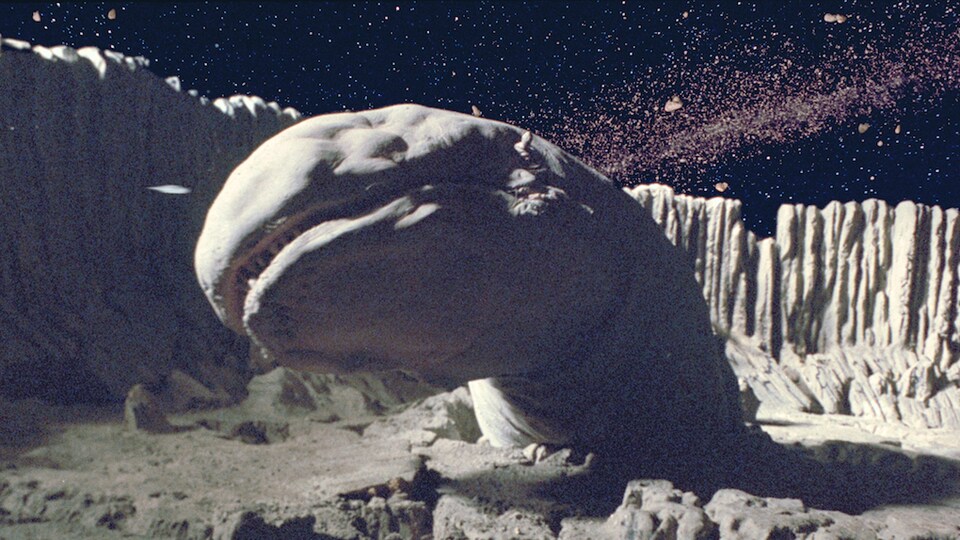
Source
Much has been made of this strange life form, most notably the question of how it survives hiding in a hole in the middle of an asteroid field that everybody knows NOT to go into. A wonderful story from the Empire edition of the anniversary anthology “From a Certain Point of View” gives life to this monster as a gentle, ancient child from a race of practically immortal creatures who exist beyond the cares of Empire, Rebellion and the like. It’s a great place to start, but there’s lots more room for story telling around this mysterious animal and its peculiar lifestyle.
Bennett R. Coles is an award-winning, best-selling author and ghostwriter of science fiction and space fantasy series. His newest novel, Light in the Abyss, is now available here.
